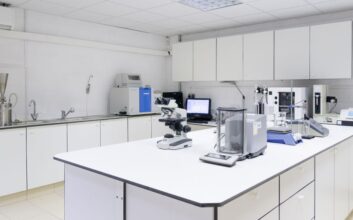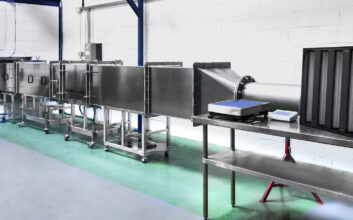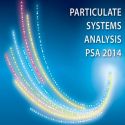Background
In the last Paper we introduced the global standards used to classify the performance of air filters, as well as the movement towards aligning these to the same classes used in air quality monitoring processes and reports. This has brought about improvements in our understanding of the impact filters have on breathable air quality.
But what has the change done for applications where the air is not used for breathing, such as process air in a combustion plant? One such sector is the power generation market, specifically where a power plant uses gas supply to fuel a turbine to create electricity. The turbine draws in huge volumes of air, compresses it, and then ignites it to accelerate flow over blades that creates rotation. The turbine links to an alternator that also rotates, creating electrical power. This type of plant is referred to as a Simple Cycle System. Often the heat output waste from the gas turbine process can be recovered and used to heat water and create steam. The steam can be used to drive an additional steam turbine, which is attached to another rotating alternator to generate more electrical power. This type of plant is referred to as a Combined Cycle System.
How a Combined Cycle Plant Works

Historical Measures
In the past the GT manufacturers have driven the specification for the air intake system, to make the turbine operate effectively. They would have handled this within their own operation or by using specialist sub-contractors, but generally to standards laid down by the turbine manufacturer. The performance aspect of these products would have been related to the international standards that we covered in our previous paper (EN 779; EN 1882, ASHRAE 52.1).
The Impact of ISO 16890
The replacement of EN 779 with ISO 16890 and the fact that there is no direct correlation between the two means that the people working within industries like power generation, will need to learn how to relate the new standard to their applications, so they can make sense of it. It is possible that this will take some time and may impair any benefit (real or otherwise) that may be gained from adopting the new standard. Bearing in mind that it has taken decades for people to fully understand EN 779 and the changes made to that specification, then this is unlikely to be a fast process.
The Technical Committee in the UK tasked with developing standards for ‘process air’ includes BSI Committee MCE/21/3 who subsequently feed into CEN/TC 195 and ISO /TC 142. The people within these Committees come from all aspects of the market, such as filter manufacturing, filter users, test laboratories and academics. Their challenge is how to replicate ‘real world experiences and challenges’ into a meaningful test process, thereby creating a relevant and fair rating of filter performance. Hopefully this will allow a reasonable comparison and support decision making on what/who to use. This will mean there is more change to come!
What Can the Power Plant Engineers Do?
There is no real reason to change anything for the immediate future. The EN 779 test standard may have been replaced, but test labs still have the process to be able to test and provide reports based on the standard as it exists now.
Clearly the benefits to processes that involve ‘breathing air’ means that filter users and suppliers will be encouraged to switch to the new standard, and this should have a positive benefit for all. The same suppliers are often involved in selling air filters for process air, and they will need to decide if the commercial cost of having to work to two test standards is worth it. However, in the end that will be dictated by the engineers, who will ultimately decide what specification and performance requirements will be applied.
In the meantime, those same engineers should consider whether they can learn more about the performance of their intake systems by adopting the new ISO 16890 standard.
It is becoming more and more accepted that cleaner process air can improve performance, particularly in the power generation market. In more recent times this sector has progressed to increasing the efficiency of air filters, to prevent smaller size particles transferring into the turbine, causing fouling or erosion on turbine blades. This damage leads to less efficient operation, creating higher costs and reduced levels of power being generated.
The question here is what level of higher efficiency is required to give the most effective financial return? This topic is vast and there are many white papers available that provide more data on this. However, the major piece of data missing is “what type and size of particles are actually present in the air the power plant is dealing with and how do they impact on the turbine performance?”. If the Power Generation business had this data, then filtration performance requirements become clearer and can lead to improved filter selection. This knowledge can drive significant improvements in performance and optimise the cost vs benefit analysis.
Particle Technology is well placed to assist in this aspect of knowledge discovery. Its dust analysis service can take an air filter at the end of its life, remove dust samples to analyse and create an output showing material and the size distribution. It also has a service that can look at the contamination seen within the turbine, to produce a similar report to identify what the current filter is not capturing ! This is a point worth taking into consideration at times when the Turbine is being serviced and presents an ideal opportunity to gather dust samples.
Using the processes, equipment and experience gained over the last 30 years, Particle Technology can combine their knowledge of particle behaviour, together with dust and contamination analysis services to produce a high quality report which will allow Power Plant Engineers and other end users of air filters, to make informed decisions. This can lead to co-operation with its filter supplier to get the best specification to optimise performance and cost.
For more information on how we can help you, please contact sales@particletechnology.com.
 sales@particletechnology.com
sales@particletechnology.com




